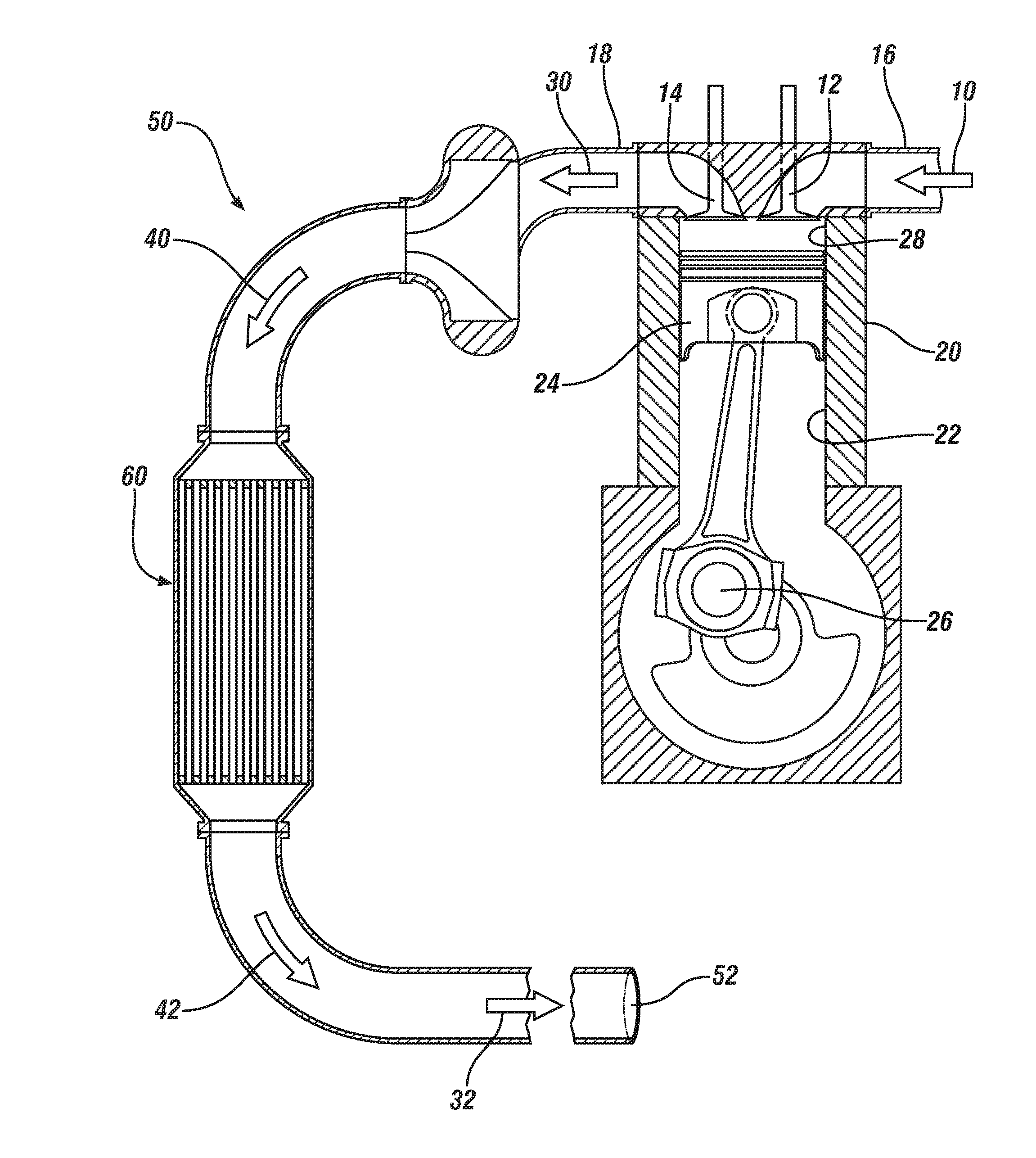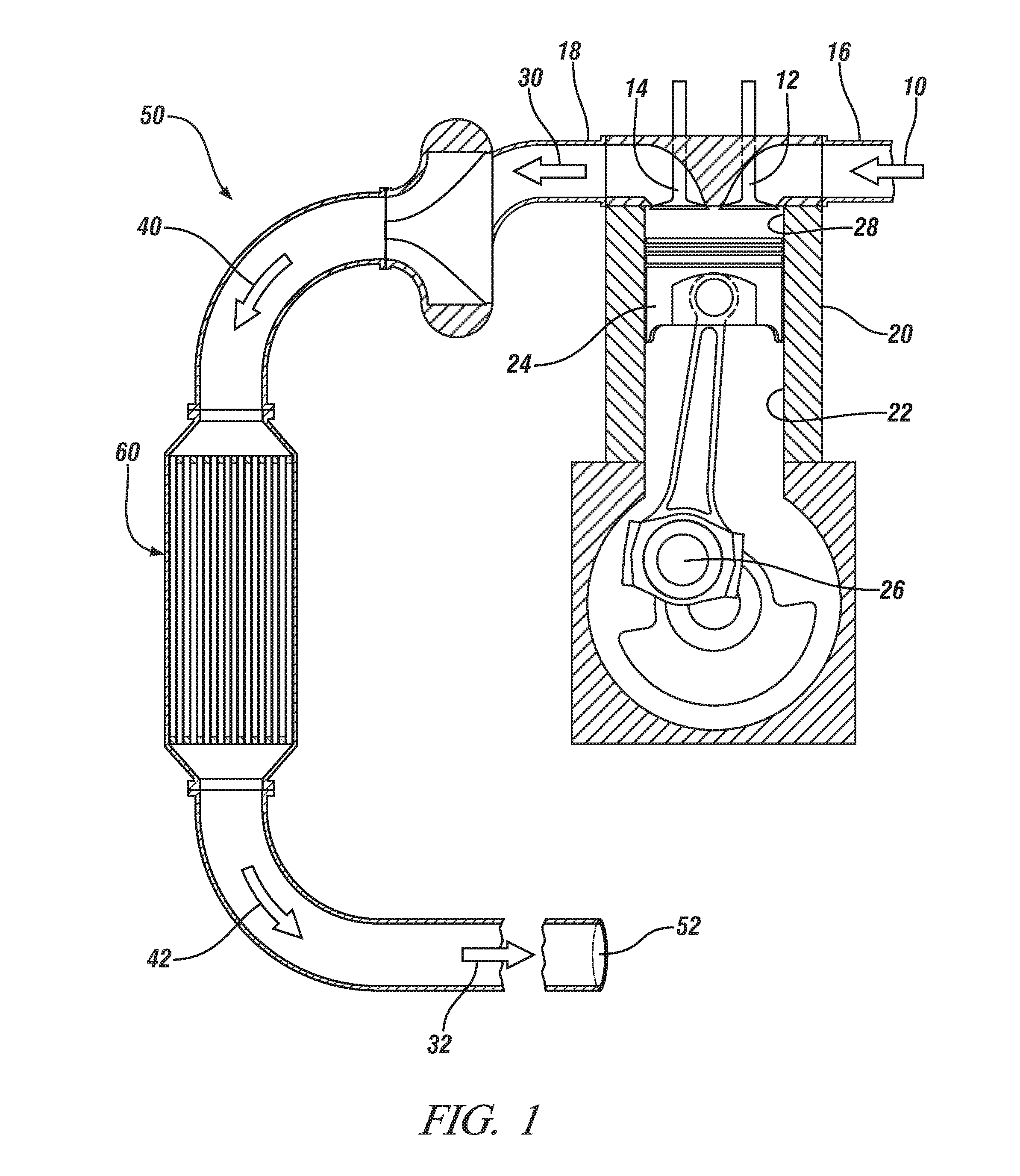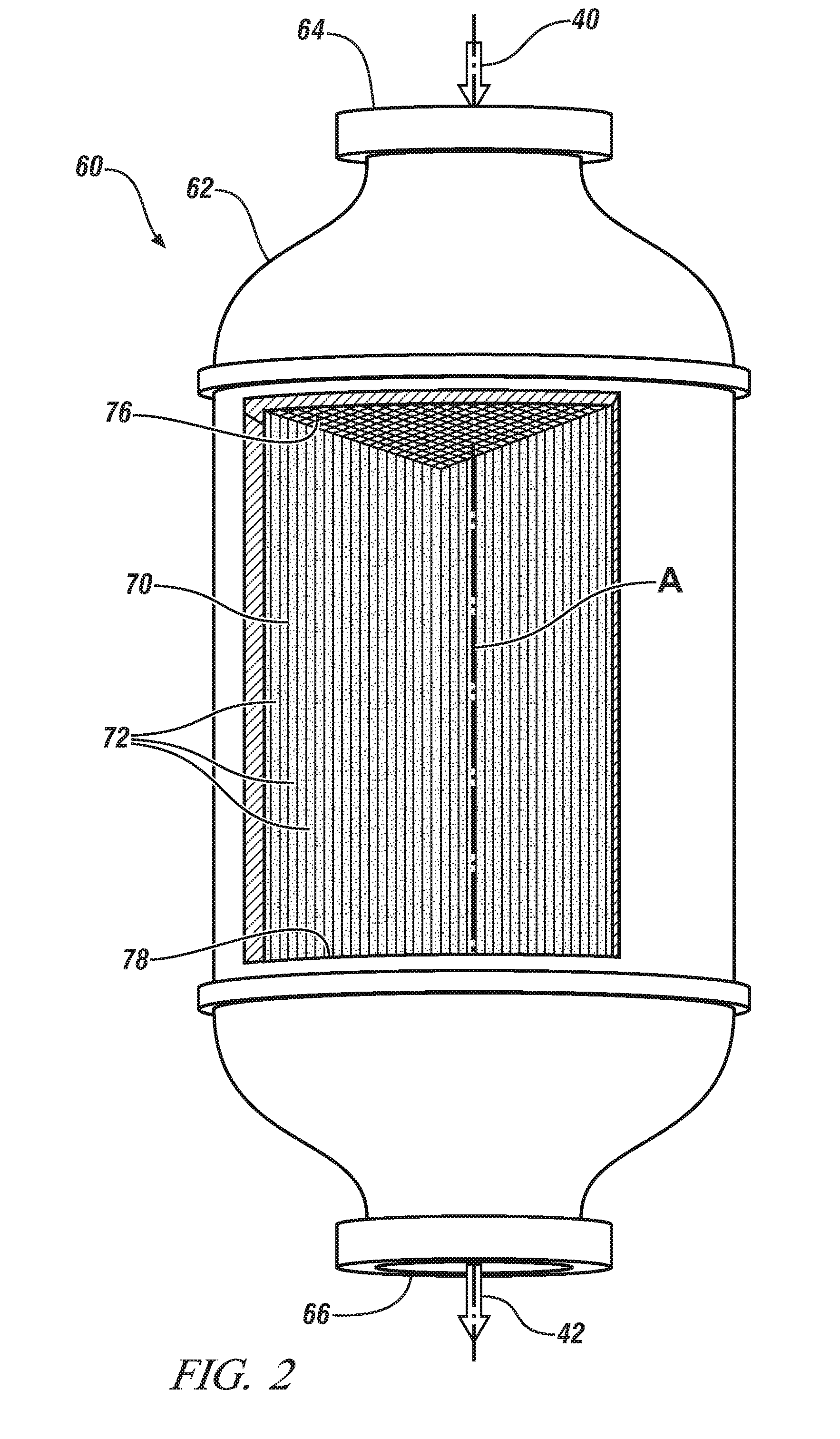Oxidation catalysts for engines producing low temperature exhaust streams
- Summary
- Abstract
- Description
- Claims
- Application Information
AI Technical Summary
Benefits of technology
Problems solved by technology
Method used
Image
Examples
example 1
[0041]The oxidation activity of these powder catalysts can be measured by placing 0.1056 cc of catalyst powder in a packed bed quartz tube reactor having an outer diameter of ⅜ inch. A synthetic diesel exhaust gas containing 500 ppm CO, 260 ppm C3H6, 90 ppm C3H8, 112 ppm C12H26, 83 ppm C8H10, 200 ppm NO, 8% O2, 8% H2O, and the balance N2 is regulated by mass flow controllers and fed to the reactor through heated stainless steel lines at a flow rate of 300 cc / min, corresponding to a space velocity of 170,000 hr−1. The oxidation activity over the catalyst material is measured over a temperature range from 125° to 300° C., and the temperature is increased stepwise by 25° C. with a 5° C. / min ramp rate.
[0042]The oxidation activity of the CeZrCuO2 catalyst and the 1.5% Pt—Pd / Al2O3 catalyst are evaluated by measuring the % CO and HC conversion over each catalyst bed. The light-off temperature, or temperature at which a 50% conversion rate is achieved (T50), is used for comparison purposes....
example 2
[0043]In another example, particles of the CeZrCuO2 catalyst are impregnated with a mixture of platinum and palladium by an incipient wetness impregnation method so that the catalyst contains the same amount of Pt and Pd as the benchmarking catalyst per specific volume of catalyst. Specifically, 29.75 grams of CeZrCuO2 powder (corresponding to the equivalent volume of 10 grams of alumina powder) is mixed with an aqueous solution of Pt and Pd nitrates containing 0.0886 g Pt and 0.0127 g Pd as the metal weight, respectively. The mixed solution is dried overnight at 110° C., and calcined at 500° C. for 2 hours.
[0044]The measured T50 for CO conversion over the 1.5% Pt—Pd / CeZrCuO2 catalyst is 124° C., which is nearly identical to the % CO conversion achieved over the CeZrCuO2 catalyst by itself. The T50 for heavy HC(C12H26 and C8H10) conversion over the 1.5% Pt—Pd / CeZrCuO2 catalyst is 220° C. and is similar to the 1.5% Pt—Pd / Al catalyst (T50=219° C.). However, the oxidation activity of t...
example 3
[0046]In order to incorporate the low temperature CO and heavy HC oxidation activity of the CeZrCuO2 catalyst with the excellent C3H6 oxidation activity of the 1.5% Pt—Pd / Al2O3 catalyst, particles of CeZrCuO2 are suitably combined with particles of 3 wt. % Pt—Pd / Al2O3. This combination of oxidation catalysts is created by taking half amounts of CeZrCuO2 and 3 wt. % Pt—Pd / Al2O3 particles and simply shaking them together by hand A 3 wt. % Pt—Pd / Al2O3 powder is used, instead of 1.5 wt. %, to create an oxidation catalyst with an amount of Pt—Pd equal to the benchmarking catalyst. By this method, Pt—Pd is loaded only on alumina and direct contact of Pt—Pd with CeZrCuO2 is prevented.
[0047]As shown in FIGS. 6, 7 and 8 dramatic decreases in the activation temperature for CO, heavy HC, and C3H6 oxidation result over the combination of oxidation catalysts. The light-off temperature for CO, heavy HC and C3H6 over this oxidation catalyst is 129, 186 and 187° C., respectively, which is 67, 33 an...
PUM
| Property | Measurement | Unit |
|---|---|---|
| Temperature | aaaaa | aaaaa |
| Temperature | aaaaa | aaaaa |
| Fraction | aaaaa | aaaaa |
Abstract
Description
Claims
Application Information
 Login to View More
Login to View More - R&D
- Intellectual Property
- Life Sciences
- Materials
- Tech Scout
- Unparalleled Data Quality
- Higher Quality Content
- 60% Fewer Hallucinations
Browse by: Latest US Patents, China's latest patents, Technical Efficacy Thesaurus, Application Domain, Technology Topic, Popular Technical Reports.
© 2025 PatSnap. All rights reserved.Legal|Privacy policy|Modern Slavery Act Transparency Statement|Sitemap|About US| Contact US: help@patsnap.com



